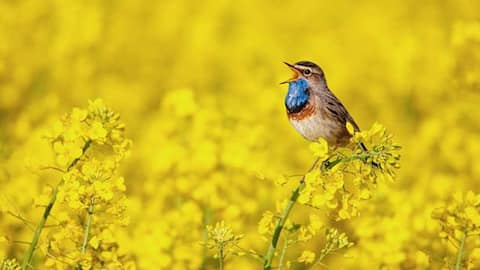Believe it or not, some songbirds 'divorce' after breeding season
What's the story
A recent study has found that some European songbirds exhibit a behavior similar to divorce at the end of their breeding season. The research highlights the social dynamics of these avian creatures, showing that while some pairs stay together through winter for spring breeding, others choose to separate. The findings were published in the journal Proceedings of the Royal Society B by Adelaide Abraham, a PhD student at Oxford University.
Research focus
Great Tits' social dynamics
The study focused on a species of songbird called the Great Tit, which is common across Europe. These small, yellow birds with a distinctive black stripe on their front mate in spring and raise their young together. However, after the chicks fledge in summer, some pairs seem to drift apart while others remain close through winter months.
Tracking method
Radio tags and feeders reveal social secrets
To study these post-breeding behaviors, Abraham and her team fitted individual Great Tits with tiny radio tags. These devices pinged when the birds visited feeders set up by researchers in woods near Oxford. The data revealed that while some pairs continued to frequent these feeders together, others appeared to start drifting apart over time—an observation the researchers dubbed as "divorcing."
Behavioral patterns
More than just a fling
Abraham noted that "those divorcing birds, they, from the start, are already not associating as much (at the feeders) as the faithful birds." This behavior intensified as winter progressed. The study challenges previous assumptions about bird social behavior during non-breeding seasons and suggests that these creatures actively choose their social associations outside of breeding periods.
Relationship dynamics
New friendships
The study also found that these birds aren't just randomly socializing until spring. Instead, they appear to be actively forming new relationships during the winter months. This behavior was observed in the Great Tits studied by Abraham and her team, suggesting a more complex social structure than previously thought.
